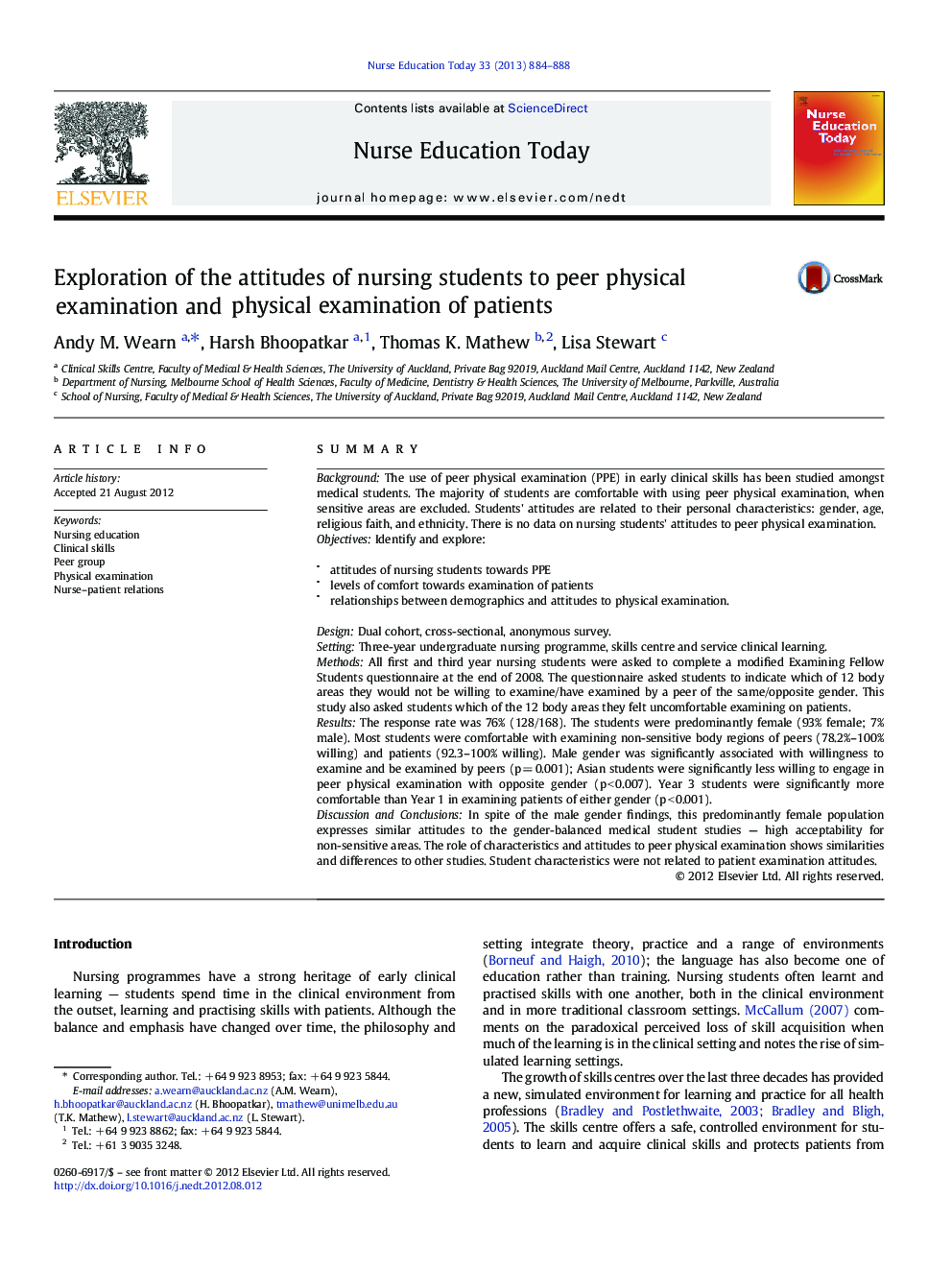| Article ID | Journal | Published Year | Pages | File Type |
|---|---|---|---|---|
| 368443 | Nurse Education Today | 2013 | 5 Pages |
SummaryBackgroundThe use of peer physical examination (PPE) in early clinical skills has been studied amongst medical students. The majority of students are comfortable with using peer physical examination, when sensitive areas are excluded. Students' attitudes are related to their personal characteristics: gender, age, religious faith, and ethnicity. There is no data on nursing students' attitudes to peer physical examination.ObjectivesIdentify and explore:•attitudes of nursing students towards PPE•levels of comfort towards examination of patients•relationships between demographics and attitudes to physical examination.DesignDual cohort, cross-sectional, anonymous survey.SettingThree-year undergraduate nursing programme, skills centre and service clinical learning.MethodsAll first and third year nursing students were asked to complete a modified Examining Fellow Students questionnaire at the end of 2008. The questionnaire asked students to indicate which of 12 body areas they would not be willing to examine/have examined by a peer of the same/opposite gender. This study also asked students which of the 12 body areas they felt uncomfortable examining on patients.ResultsThe response rate was 76% (128/168). The students were predominantly female (93% female; 7% male). Most students were comfortable with examining non-sensitive body regions of peers (78.2%–100% willing) and patients (92.3–100% willing). Male gender was significantly associated with willingness to examine and be examined by peers (p = 0.001); Asian students were significantly less willing to engage in peer physical examination with opposite gender (p < 0.007). Year 3 students were significantly more comfortable than Year 1 in examining patients of either gender (p < 0.001).Discussion and ConclusionsIn spite of the male gender findings, this predominantly female population expresses similar attitudes to the gender-balanced medical student studies — high acceptability for non-sensitive areas. The role of characteristics and attitudes to peer physical examination shows similarities and differences to other studies. Student characteristics were not related to patient examination attitudes.
